
The country’s growing urban infrastructure and manufacturing sectors indicate that demand is likely to remain robust in the years ahead. If India is to achieve the goal of being a “developed nation”, the steel industry must play a crucial role as has been the case with all the major developed countries and East Asian countries like Japan, South Korea and China.
Notwithstanding the current challenges, Indian steel industry still has significant potential for growth. the accelerated spend in infrastructure sector, expansion of railways network, development of domestic shipbuilding industry, opening up of defence sector for private participation, anticipated growth in automobile and capital goods industry and the construction in urban & rural areas, are expected to create significant demand for steel in the country.
Growth in steel consumption in a country is typically linked to the economic growth and steel intensity. While growth in GDP is a crucial determinant of growth in overall consumption, steel intensity is the definitive parameter for an economy and determines the growth rate of steel demand vis-à-vis consumption over time.
According to the National Steel Policy, steel consumption from construction & infrastructure sectors is expected to increase to 59 percent by 2030-31.
Creation of steel demand in the country is one of the major task to be undertaken in this direction. To drive steel demand, Ministry has identified construction and manufacturing sectors like Rural development, Urban infrastructure, Roads & Highways, Railways etc. to be the key focus areas and will take necessary steps to achieve the same through following –
This story is from the November 2019 edition of Steel Insights.
Start your 7-day Magzter GOLD free trial to access thousands of curated premium stories, and 9,000+ magazines and newspapers.
Already a subscriber ? Sign In
This story is from the November 2019 edition of Steel Insights.
Start your 7-day Magzter GOLD free trial to access thousands of curated premium stories, and 9,000+ magazines and newspapers.
Already a subscriber? Sign In

Steel's Net Zero mission
The country’s commitment to achieving Net Zero within a targeted timeframe will now propel its steel sector towards a sustainable future in line with global trends.
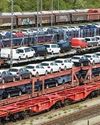
Fuel Price Hike, Supply Chain Disruption Hurt Festive Sales
Supply chain disruptions and fuel price hikes have hurt festive sales in a big way as most auto majors posted decline in sales in October.

Seaborne coking coal offers remain range-bound
Seaborne coking coal offers moved in a narrow range in October amid global supply tightness and healthy spot demand.
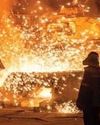
Global crude steel output down 8% in September
China manufactured 74 mt in September, fall of 21% y-o-y while India’s production went up by 7% to 10 mt.
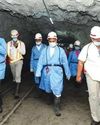
MOIL embarks on expansion projects
“Even though our country is blessed with manganese ore reserves, we import 50% of the domestic requirement. We have to lower our import dependence and save precious foreign exchange.” Ram Chandra Prasad Singh, Steel Minister

Iron ore handled by major ports down 17% in H1
The 12 major Indian ports handled 27 mt of iron-ore during H1 of 2021, down by 17% from 33 mt recorded for the corresponding period of previous year.
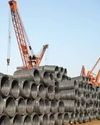
Shrinking China output to boost India exports
“In the third quarter of 2021, the company actively responded to the pressure from external policies, such as production curtailment and dual control system on energy consumption and intensity, as well as coal resource shortage and surging prices.” Baoshan Iron and Steel Co Ltd

Indian Railways' iron-ore handling up 25% in H1
Indian Railways in April-September of 2021 (H1) transported 84 mt of iron ore, up by 25% over 67 mt during April-September 2020.
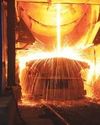
September crude steel production up 7.2% y-o-y
India’s crude steel production in September 2021 grew 7.2 percent to 9.547 million tons (mt) over September 2020 but was down by 3.2 percent from August 2021 output, provisional steel ministry data showed.

“Five enablers: way forward to sustainable cleaner steel”
Right and scalable technology, appropriate policy guidance by government, access to finance to fund transition, willingness of customers to pay for cleaner products and infrastructure for use of new technologies are the need of the hour for the sustainable and cleaner steel industry, according to Madhulika Sharma, Chief Corporate Sustainability, Tata Steel.